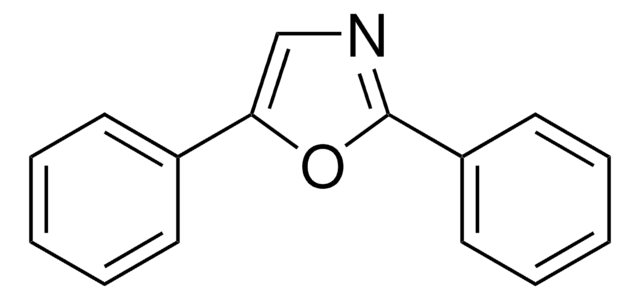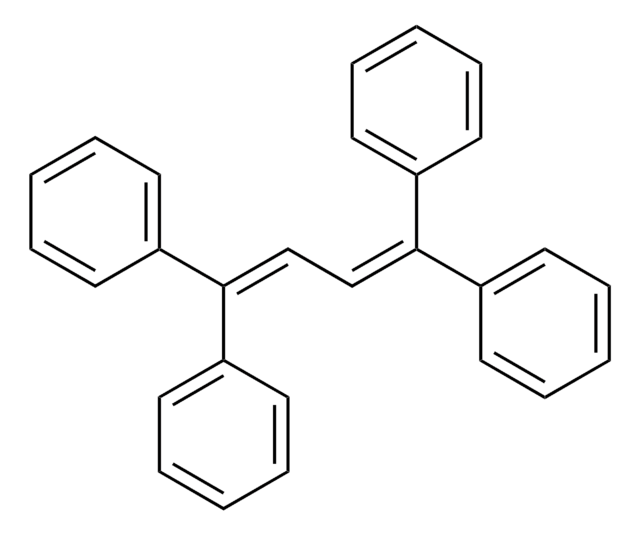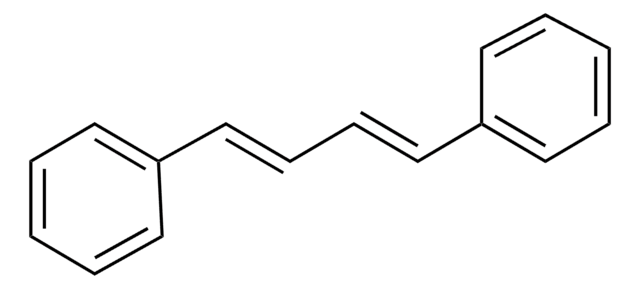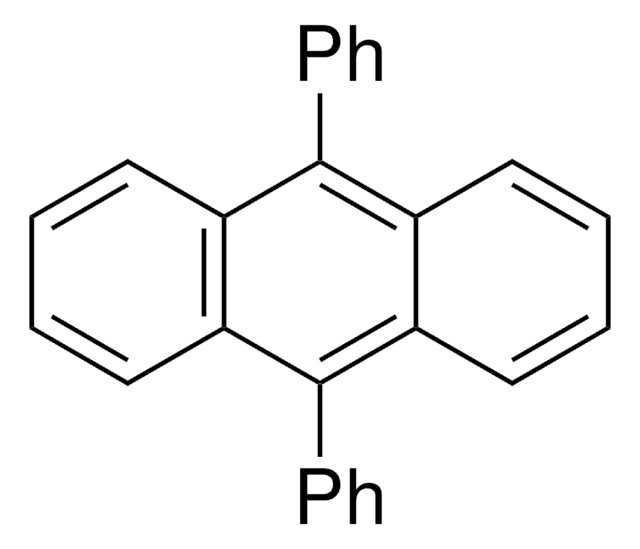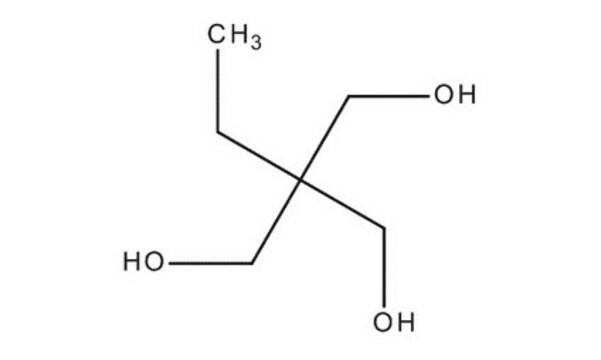Wichtige Dokumente
15090
1,4-Bis(2-methylstyryl)benzol
BioReagent, suitable for scintillation, ≥98% (UV)
Synonym(e):
Bis-MSB
About This Item
Empfohlene Produkte
Produktlinie
BioReagent
Assay
≥98% (UV)
Form
solid
mp (Schmelzpunkt)
180-182 °C (lit.)
180-182 °C
Fluoreszenz
λem 416 nm in heptane
λem 419 nm in cyclohexane
Eignung
suitable for scintillation
SMILES String
Cc1ccccc1\C=C\c2ccc(cc2)\C=C\c3ccccc3C
InChI
1S/C24H22/c1-19-7-3-5-9-23(19)17-15-21-11-13-22(14-12-21)16-18-24-10-6-4-8-20(24)2/h3-18H,1-2H3/b17-15+,18-16+
InChIKey
QKLPIYTUUFFRLV-YTEMWHBBSA-N
Suchen Sie nach ähnlichen Produkten? Aufrufen Leitfaden zum Produktvergleich
Anwendung
Ähnliches Produkt
Signalwort
Warning
H-Sätze
Gefahreneinstufungen
Acute Tox. 4 Oral - Aquatic Chronic 4 - Eye Irrit. 2
Lagerklassenschlüssel
11 - Combustible Solids
WGK
WGK 3
Flammpunkt (°F)
Not applicable
Flammpunkt (°C)
Not applicable
Persönliche Schutzausrüstung
Eyeshields, Gloves, type N95 (US)
Hier finden Sie alle aktuellen Versionen:
Besitzen Sie dieses Produkt bereits?
In der Dokumentenbibliothek finden Sie die Dokumentation zu den Produkten, die Sie kürzlich erworben haben.
Kunden haben sich ebenfalls angesehen
Unser Team von Wissenschaftlern verfügt über Erfahrung in allen Forschungsbereichen einschließlich Life Science, Materialwissenschaften, chemischer Synthese, Chromatographie, Analytik und vielen mehr..
Setzen Sie sich mit dem technischen Dienst in Verbindung.